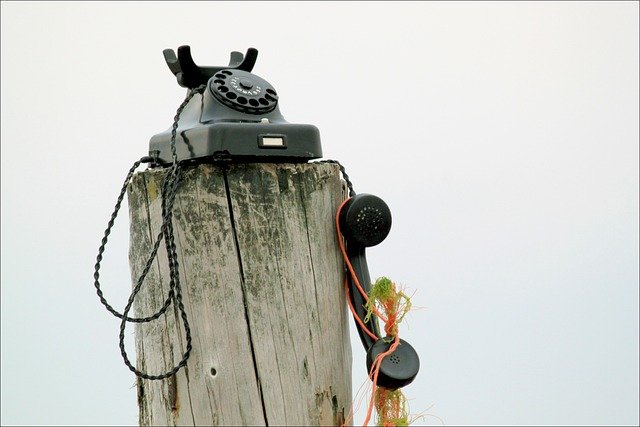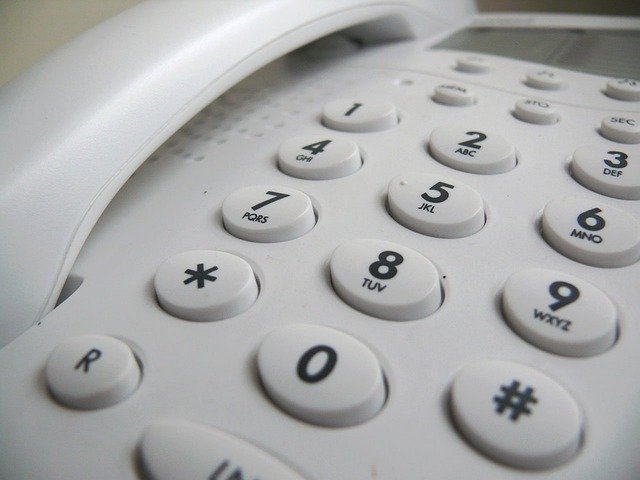
Personal alarms and the digital switchover - what you need to know
It’s no secret that the way we make phone calls is changing. The old copper wires that have served us so well and for so long are being replaced throughout the UK, very soon becoming altogether obsolete. Whilst this digital switchover will almost certainly prove to be an exciting and overwhelmingly positive change, as with all great advancements there will be some teething issues to contend with.
Unfortunately, if your personal alarm relies on a phone line connection you will probably experience some of these issues. There is no guarantee that any of these personal alarms will be compatible on a digital network, and if they are able to connect they will offer less protection than you are accustomed to. For instance, even if you are able to connect your personal alarm to a digital line, you will not be able to make an emergency call in the event of a power cut. This is just one of the many potential issues facing those who wish to stick with their current personal alarm following the switchover.
There are other important, life-saving pieces of equipment which are currently dependent on an analogue phone line. Chances are that you have such equipment in your home right now. These can include security, smoke, and fire alarms. As with personal alarms, adapting these to work on a digital network means that a power cut could result in a potential disaster. Needless to say, this is not the kind of equipment that you should be taking risks with.
Whilst this may all sound rather frightening, the solution is simple enough. There are digital-ready alternatives for all of these products available right now so that you can avoid any potential issues in the long run. YourStride’s personal alarm is one such product. It utilises a digital network and is therefore guaranteed to work following the switchover.
Read on for all the information you need to ensure that you’re ready for the digital switchover.
Why is the UK’s telephone network changing?

The current Public Switched Telephone Network (PSTN) has been the bedrock of telecommunications for over a hundred years. Given this tenure, the PSTN is unsurprisingly approaching a state of antiquity.
These analogue phone lines are seeing increasing issues, with connection failures steadily rising. Worst of all, as the equipment that powers the PSTN is so old (early 20th century, according to BT), replacement parts are difficult (if not impossible) to source. These issues will continue to increase, and the digital switchover has been accelerated as a result. Quite simply, the PSTN needs to be replaced before it’s too late.
Soon, all landline calls will be transmitted via a Voice Over Internet Protocol (VoIP) system. VoIP is an efficient, environmentally friendly, future-proof, and overwhelmingly superior carrier of communications. Signals will be clearer, performance will be more reliable, and it will allow for functionality that simply isn’t possible via the old PSTN infrastructure.
When is the UK’s telephone network changing?
Now.
In fact, even as we write this, landlines are being switched to VoIP throughout the UK. A digital phone line is now typically included with a new broadband or phone line installation, with the number of people ready for the switchover increasing by the minute. If you’re still on an analogue phone line, you can expect your landline provider to contact you soon with details and timings for the digital migration.
BT announced that by December 2025 they will be retiring the analogue phone network altogether, and other providers have listed similar timeframes.
What do I need to do to continue using my landline following the switchover?

Providing you have a broadband connection and a digital personal alarm very little. When your landline has been switched to a digital connection, it should work in the same way it always has - with the only noticeable difference being that your phone lead will plug into a broadband router as opposed to a wall socket.
If you don’t currently have a broadband connection, it is expected that providers will have a number of options available for customers to choose from when making the switch. These options will ensure that nobody is forced to unwillingly take out a high-speed broadband connection to simply use a phone line.
If you don’t have a digital personal alarm, your alarm may not continue to work.
Will my personal alarm continue to work after the phone network switch?
Maybe, but with a significant potential problem.
If your personal alarm is currently reliant on a phone line, there is no guarantee that it will continue to work on the new digital system. You should discuss this with your provider, as your personal alarm may need to be adjusted or reconfigured to continue operating following the digital switchover.
If you manage to get your personal alarm to connect on the digital line, it’s important that you have a back-up option in the event of a power cut. VoIP, unlike PSTN, relies on mains power. This means that you will not be able to make an emergency call if there is a power outage. To avoid this scenario, there are a few options you may wish to consider.
Use a battery hub backup.
Vulnerable customers should get in-touch with their providers and ask if they are eligible for a battery backup which will kick-in when mains power is lost. Unfortunately, there is no guarantee that the battery backup will work with your specific personal alarm, and if it does it will only provide approximately 1 hour of additional usage.
Ask to be excluded from the digital switch.
You can ask your provider to allow you to continue using your existing phone technology. Whilst this may seem like a decent option in the short term, please remember that the analogue infrastructure will no longer be maintained after 2025.
Switch to a digital personal alarm.
The most reliable option is to switch to a digital alarm today and avoid all potential issues once the telephone networks change. YourStride provides the UK’s top rated personal alarm service (digital or analogue) and we’ve detailed some of the benefits of going digital below.
Why should you switch to a digital personal alarm?

Reliability.
As mentioned, the infrastructure behind the analogue phone line is antiquated and will soon cease from being maintained. This means that, sooner or later, a personal alarm reliant on an analogue phone line will stop working. It’s important that you make the switch to a digital alarm before this occurs.
There may also be issues before this date. As detailed previously, in the event of a power failure your personal alarm will not be able to make emergency calls. And though battery backups may be available, these only offer approximately an hour of additional use.
Greater working range.
With no restrictive connection to a phone line necessary, a digital personal alarm offers superior working range. The YourStride personal alarm watch, for instance, works anywhere in the UK, 24/7. This is because it uses digital, mobile networks to transmit emergency calls. This allows for much greater peace of mind with help available anywhere. It also means that users can lead an active and independent life, instead of being confined to the limited working range of an analogue alarm.
Cost.
Digital alarms, such as the YourStride alarm watch, don’t require a phone line connection. That means you won’t need to worry about paying for a landline, broadband, or other connection service. The YourStride alarm also arrives fully set-up, so there are zero installation fees.
Faster connection and greater clarity.
As soon as you press the SOS button on your personal alarm your emergency call will be transmitted. The reliable, lightning quick speed of a digital connection cannot be replicated by traditional analogue alarms. This also helps to improve clarity, with better speech quality delivered.
Troubleshooting.
If you happen to have an issue with your digital personal alarm, there is a good chance that it can be solved remotely. This is because your provider will be able to access important system information over a digital network, and provide the appropriate fix. This will limit any downtime, and ensure connectivity to the emergency services.
Features.
A digital personal alarm offers a lot more functionality. For example, the YourStride alarm allows our emergency service team to utilise GPS to identify the wearer’s location, which may prove to be a life-saver if you’re unsure of your surroundings.
Being digital also allows for the YourStride alarm to pack additional features such as heart and blood pressure monitors, step counters, and so on, in a smart and discrete device.
If you're looking for more information on the YourStride alarm, you'll find all the information you need on our personal alarm and fall alarm pages.